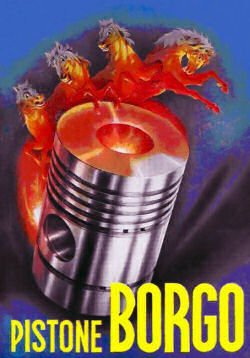




Triumph, BMW, & Kawasaki Sales Spares & Repairs.
Established for over 40 years and run by expert motorcyclists.
Fully authorised workshop.
A Brief History of the Marque
Manufactured: 1910-1930*
Via Monti, 5 & 8, Torino (1914)
Corso Stupinigi, 14, Torino (1915)
Founded in Turin by the brothers Eugenio and Fontana*, the firm used their own horizontally opposed twins of 500 and 575cc with three-speed gearbox and chain drive, with the engine mounted longitudinally. It bears a distinct similarity to the Bradshaw twin which first appeared in 1912.
The first Fongri was a built in 1910 using a single cylinder four-stroke machine. Their second motorcycle, said to have appeared in 1913, was a flat twin.
An early Fongri-built tricycle powered by a V-twin NSU engine was produced, and in the 1920s they built a twin-cylinder 500cc water-cooled model along with a 125cc model.
In general the motorcycles were very stylish and quite advanced, but apparently not commercially successful in part no doubt as they built many components in-house including carburettors, gearboxes and engines.
Motorcycle production ceased around 1930.
The firm was also involved in aviation, producing a variety of aircraft.
Fongri Models
Interpreting Luraschi (Vol 1, pp 141-143):
The Fongri was originally produced in Turin by Fontana and Grignani; later it seems that Fongri continued to be built by E. Grignani alone - documentation of this is quite fragmentary and at times contradictory.
Shortly after the end of the Great War, in 1919 they released a model with a twin-cylinder horizontally-opposed engine of 578 cubic centimeters. The connecting rods are of nickel steel on roller bearings, the crankshaft and cam shaft are on ball bearings, the flywheel - of large diameter - is external. Another detail not common at the time is the complete enclosure of the valves which are housed in an aluminum cover. The carburettor is of a special type, the lubrication is by hand with semiautomatic pump, and ignition is by means of high-voltage magneto driven by gears and mounted on the engine between the two cylinders. Transmission all via chain, with both primary and final chains enclosed in an oil bath.
The chassis is made of steel tubes with patented Fongri front fork. Controls are all on the handlebars, the wheels of 26 x 2 3/8" are quick disassembly (QD) and it has independent controls for front and rear brakes.
In 1920 they produced the same machine with little variation worthy of note: we will only say that some sources give a cylinder capacity of 575cc instead of the cylinder capacity of 578cc in 1919.
At the end of 1921 it was announced that Fongri would be built at the Société Anonima Officine Meccaniche di Ceriano Laghetto, with Mr. Gianetti in charge. No precise data is available on Grignani's participation in this enterprise - whether he became a member of the new company or if he granted a license for construction.
The new company ... seems to have not succeeded since in 1922 the production of Fongri slows down considerably.
At the end of 1922 production was completely suspended and shortly afterwards the company announced that the brand would no longer be produced at Ceriano Laghetto, but in Turin.
In November 1923 at the Milan Motor Show the resumption of production was announced and the new 575 appeared the following year with a 3-speed Fongri gearbox.
1925. The 575 Sport Luso appeared with more elegant styling, light alloy pistons, new crankcase design, and handlebar-controlled clutch.

Aluminium pistons first appeared before the Great War in engines by W.O. Bentley (UK) and Borgo (IT).
Fongri also built a racing OHV 500cc HO model with very light pistons. A 1925 version was built with a disc brake.
Competition
Eugenio Grignani won races in 1913 and also competed on the 1925 500cc Speciale, as did Tazio Nuvolari, winner of the 1925 350cc European Motorcycle Championship.
Notes
Sources vary, with Tragatsch and others giving widely varying dates. Fongri.com, built by someone of the same surname as one of the principals (Gianmario Grignani) gives dates of 1910-1930. Moto-collection.org says that the company ceased manufacture during the first war, restarted around 1921 in Milan and stopped in 1922, then in 1924 resumed in Turin with Grignani and ceased in 1926.
1915 sales brochures state company name as Grignani & Fontana.
A number of images in the gallery are collations from original catalogues available at fongri.com in PDF format. M. Dumas hints that the company was somewhat creative with the facts, which leads one to wonder at the accuracy of those catalogues.
A 1928 Sport Lusso 575cc appeared at the 2013 Villa d'Este Concours, and a 1921 5½ hp model has been displayed at Museo Nicolis.
A 1925 Speciale sold at auction in 2007 for almost 50,000 euros.
Sources: MC Storico Conti, Luraschi, moto-collection.org, Tragatsch, coys.co.uk, et al.
If you have information to add about these classic Italian machines, please contact us